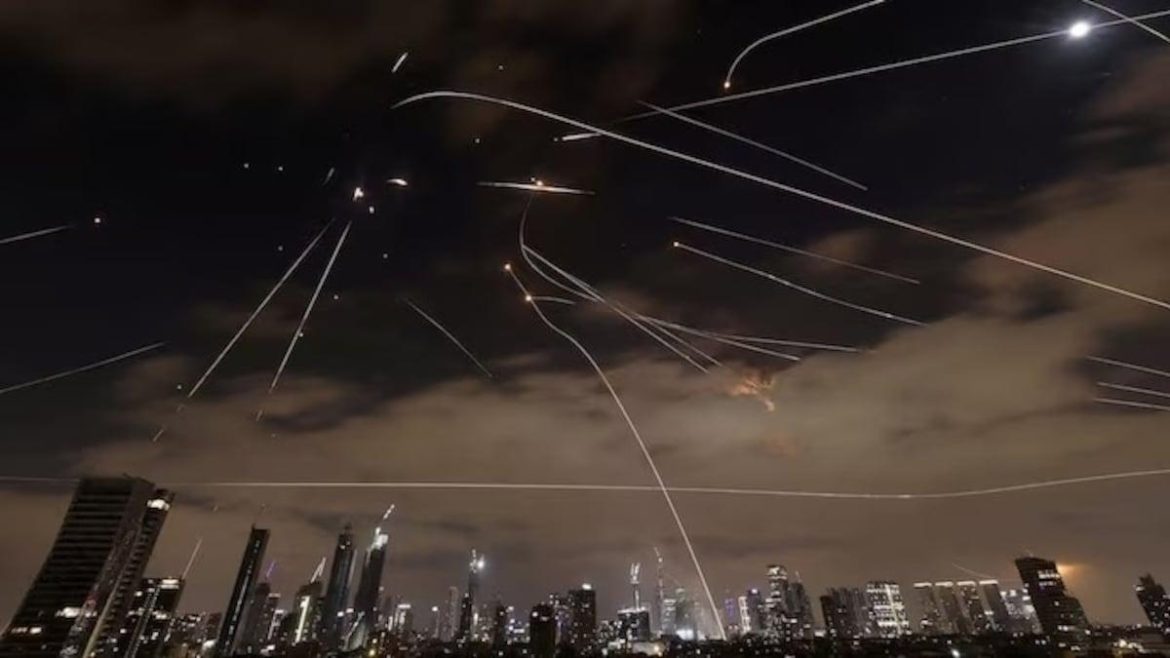Growing Turmoil in West Asia Raises Alarms for India
The escalating Israel–Iran conflict is no longer a distant geopolitical concern—it’s a potential turning point for India’s economic stability, digital infrastructure, and strategic ambitions. From crude oil imports and Basmati rice exports to undersea internet cables and regional trade routes, India is entangled in multiple dimensions of vulnerability that could be drastically affected by any further military escalation in the Middle East.
Oil Supply at Risk: Strait of Hormuz on Edge
India imports over 80% of its crude oil requirements, with a major share coming through the Strait of Hormuz—a narrow but vital maritime chokepoint adjacent to Iran. Any disruption in this corridor due to airstrikes, retaliatory attacks, or naval confrontations could have a massive ripple effect on global oil prices, directly increasing India’s import bill and widening its trade deficit.
“The global impact was immediate during the 2019 Gulf tanker crisis, with oil prices rising 4–5% and insurance premiums for vessels increasing by 20%”—a painful memory that could repeat itself under current conditions.
India’s Farmers Hit Hard: Iran and the Basmati Trade Crisis
Iran is one of India’s top importers of Basmati rice, particularly from Punjab and Haryana. In the current fiscal year 2024–25, Iran bought over 855,000 metric tonnes of Indian Basmati, worth nearly ₹6,374 crore. But delayed payments and trade uncertainties are jeopardizing this relationship.
Reports indicate that private Iranian traders now take up to 6–8 months to settle payments. Government-backed entities like the Government Trading Corporation (GTC) have also extended payment cycles to 180 days. Constrained by cash flows and uncertain futures, Indian rice exporters are now redirecting exports elsewhere at reduced prices just to keep afloat.
Shaky Financial Markets Reflect Geopolitical Fear
Global market jitters quickly spill into India’s stock exchanges amid geopolitical crises. The volatile week of June 13 reminded investors of how fragile markets can be when conflict zones are involved. The BSE Sensex plunged by 1,300 points and the Nifty 50 dipped below 24,500 following Israeli attacks on Iranian nuclear facilities. Oil and gas stocks like BPCL, HPCL, and Indian Oil fell 3.5% as Brent crude spiked almost 9% due to feared supply shortages.
In a risk-off environment, investor confidence declines, the rupee weakens, and inflation fears resurface. The Reserve Bank of India may be forced to intervene in the forex market or revise inflation estimates, putting pressure on its post-COVID economic recovery goals.
Chabahar Port: A Strategic Gamble on Shaky Grounds
India’s investment in Iran’s Chabahar Port—a $85 million endeavor—serves as a linchpin for its connectivity to Afghanistan and Central Asia, circumventing Pakistan. However, deepening Iran–Israel hostilities are placing this strategic asset in harm’s way. Cyber intrusions, drone strikes, and military build-ups in the Gulf of Oman heighten the port’s vulnerability to conflict spillovers.
Though Chabahar is currently exempt from U.S. sanctions due to its humanitarian purpose, ongoing conflict could jeopardize this status. A resurgence in sanctions or shipping insurance hikes could significantly impede the commercial viability of the port. According to experts, “New Delhi must double down on diplomatic engagements to safeguard Chabahar’s immunity amidst mounting tensions.”
High-Stakes Infrastructure: Undersea Internet Cables in the Warpath
Modern warfare’s invisible battlefield lies beneath the ocean floor—where critical undersea internet cables reside. These fiber-optic lines carry over 95% of the world’s internet and telecommunications traffic, connecting key nodes like India, Europe, and Southeast Asia through conflict-prone areas such as the Red Sea and the Strait of Hormuz.
The Europe India Gateway (EIG), FLAG (Fiber-Optic Link Around the Globe), and SEA-ME-WE 5 cables all pass through volatile waters near Israel and Iran. Disruptions to these cables aren’t hypothetical—2024 saw damage to three cables in the Red Sea, affecting digital latency across South Asia and forcing ISPs in India to reroute traffic via more expensive and less efficient paths.
With over 90% of India’s global data flow transiting the Middle East, the strategic threat is severe. India’s $245 billion digital economy—a cornerstone of its GDP—is highly exposed.
According to the OECD, a single cable break can reduce internet bandwidth by up to 70% in impacted regions. “India must push for regional safeguards and invest in alternative routes,” experts urge, pointing to partnerships with Google and Reliance Jio aimed at establishing resilient routes like the Blue-Raman cable system.
Strategic Diplomacy: Walking a Tightrope
India’s foreign policy challenge is to maintain its balancing act—safeguarding long-standing relations with Israel, while also nurturing strategic partnerships with Iran. As New Delhi pursues its ‘Act West’ policy and aims to become a continental connectivity leader, complex diplomacy and regional stability become absolutely essential to realizing these long-term goals.
India must also leverage multilateral platforms like BIMSTEC and the Indian Ocean Rim Association to internationalize the protection of digital and economic corridors from hybrid threats including cyberattacks and cable sabotage.
A Call for Strategic Resilience
The Israel–Iran war underscores a concerning reality for India: seemingly distant wars can have impactful consequences on energy security, trade continuity, digital functionality, and strategic mobility. From rising fuel prices and delayed agricultural exports to financial market jitters and digital chokepoints, India is exposed on multiple fronts.
Going forward, Indian policymakers must prioritize diversification—of energy sources, trade markets, internet routes, and diplomatic channels—to build greater resilience. As the conflict continues to evolve, its impact could set the tone for India’s economy, foreign policy posture, and digital future in the decades ahead.

